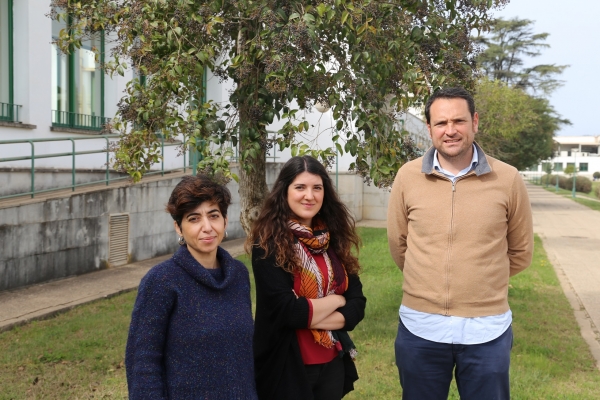The olive oil industry generates about 30 million cubic meters of mill waste per season. The most solid part of this waste is pomace, and is a major source of concern for the industry because of the high volume generated by each campaign, and its capacity to pollute, affecting soil balance. It is precisely the pomace's richness in organic compounds that makes it a pollutant. However, they also present an opportunity: the bioactive compounds it contains are mainly phenols and triterpenes, known for their health benefits, given their antioxidant potential.
In order to determine the concentration and composition of phenols in the pomace resulting from the extraction of olive oil, and the existing variations depending on olive variety, Anabel Expósito, a researcher with the UCOlivo and Analytical Chemistry research groups at the University of Cordoba, has characterized the bioactive compounds of 43 olive varieties for three consecutive seasons. In a project with professors Feliciano Priego and Concepción Muñoz, at the Department of Analytical Chemistry and the María de Maeztu Unit of Excellence – Department of Agronomy (DAUCO) respectively, she evaluated the role played by olive variety and how it affects the phenolic profile of the pomace, taking into account, for the first time in this type of study, a wide variety of cultivars and a time span greater than a single season.
After categorizing the cultivars into three different groups according to the bioactive compounds that were found, taking into account a protocol previously implemented by the Analytical Chemistry group to classify the phenols of the oil itself, they detected that "the variety is the main factor determining the profiles of the bioactive compounds" says Anabel Expósito.
Depending on their concentrations, the pomaces were classified into three groups: those that contained higher concentrations of oleuropein and ligustroside; those that had higher concentrations of oleacein and oleocanthal; and finally, those that had minor compounds, such as certain flavonoids and triterpenic acids.
In this way, what was originally a pomace becomes a by-product from which to extract phenols that can be used in the Cosmetics or Pharmaceutical industries, or in food enrichments, or animal feed, due to their well-known health benefits. In addition, by extracting these compounds from the pomace, it becomes less polluting for the environment, thereby obtaining a double benefit.
"From the point of view of the recovery of these pomaces, the industry may know that if an area tends to be used for the picual variety, for example, the pomace generated will contain certain phenols, so one knows which phenols can be extracted from it," Priego explained.
"The high number of varieties analyzed, and having continued the study over three seasons, renders this work highly valuable. Thanks to Cordoba's World Bank of Olive Germplasm, we can have varieties cultivated under the same agronomic and climatic conditions, thus allowing it possible to compare them", observed Muñoz. The fact of doing so over three seasons also allowed us to appreciate the inter-annual variability in the composition of phenols, which, though also important, turned out to be less decisive than the genetic effect of the olive variety.
Reference
Expósito-Díaz, A.; Miho, H.; Ledesma-Escobar, C.A.; Moral, J.; Díez, C.M.;Priego-Capote, F. (2022).Influence of genetic and interannual factors on bioactive compounds of olive pomace determined through a germplasm survey, Food Chemistry, Vol 378 https://doi.org/10.1016/j.foodchem.2022.132107


